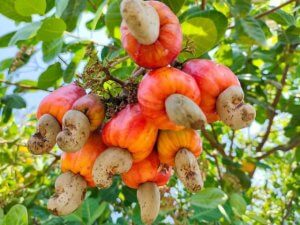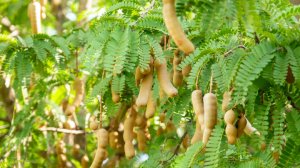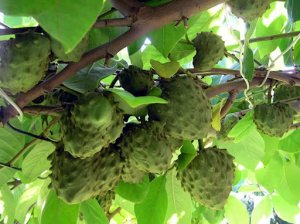In today’s fast-growing and changing urban lifestyle, many children are missing out on the vibrant flavors and unique experiences that come from visiting rural areas, particularly when it comes to the rare fruits that thrive in village settings.
As families become increasingly city-centric, the rich agricultural heritage found in the countryside is often overlooked.
Among the treasures of rural fruit orchards is the custard apple, or cherimoya, commonly known as sour soup, known for its creamy texture.
This fruit is often a delightful surprise for those who encounter it for the first time; the flesh is white and pulpy with a sweet acid flavor, and a few black bean-size seeds are embedded in the pulp.
The mangoes are explicit with their greenish-yellow skin-shaped and extended shape; it is a variety priced for its distinct sweetness whether eaten raw or ripe; it is another special fruit most urban children may never experience its sweet flavor. It flourishes mainly in districts that are too dry.
One other mouthwatering fruit is the wood apple, which provides a sweet yet slightly sharp taste with its hard shell and tangy pulp; it offers a flavor that is both exotic and refreshing. It is also known as elephant apple or sometimes called monkey fruit. These are the kinds of fruits enjoyed during family gatherings as children listen to fork tales and songs; such moments are being lost with urbanization.
We cannot speak about rare fruits and forget that tamarind fruit is a pod-like legume from a tamarind tree; it is a hard shell like a long peanut brown in color, but inside is a fleshy pulp with a texture kind of like a date, known for its tangy and sweet flavor.
It is commonly used in various dishes and beverages, adding a unique twist to culinary creations, and can also be enjoyed casually during cattle grazing or leisure time.
Another outstanding treasure of rural fruit orchards stands a cashew nut or cashew apple, which has light reddish to yellow fruit. Whose flesh and juice can be processed into a sweet, astringent fruit drink, either distilled or fermented into vinegar, citric acid, or an alcoholic drink?
The true fruit is kidney-shaped or boxing glove-shaped and grows at the end of the cashew apple.
As urbanization continues to grow, it is essential for families to seek opportunities to reconnect with rural traditions and the natural bounty that villages offer.
These rare fruits not only provide unique flavors but also serve as a bridge to cultural heritage, teaching children about the importance of agriculture and biodiversity.
To ensure that the next generation appreciates these treasures, parents are encouraged to plan visits to rural areas, where children can engage with nature, taste these rare fruits, and learn about the importance of preserving traditional farming practices.
In a world where convenience often overshadows experience, rediscovering the simple joys of rural life can enrich our children’s lives in ways that extend far beyond the dinner table.



